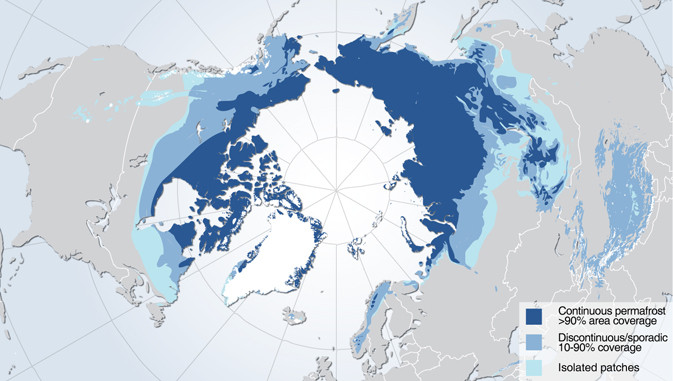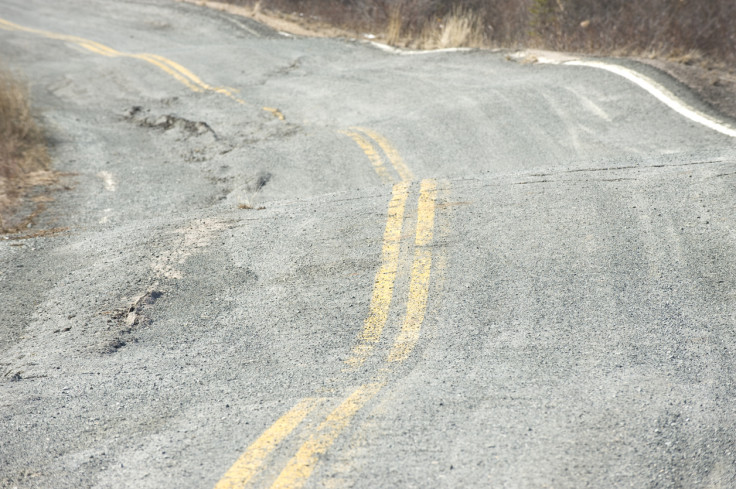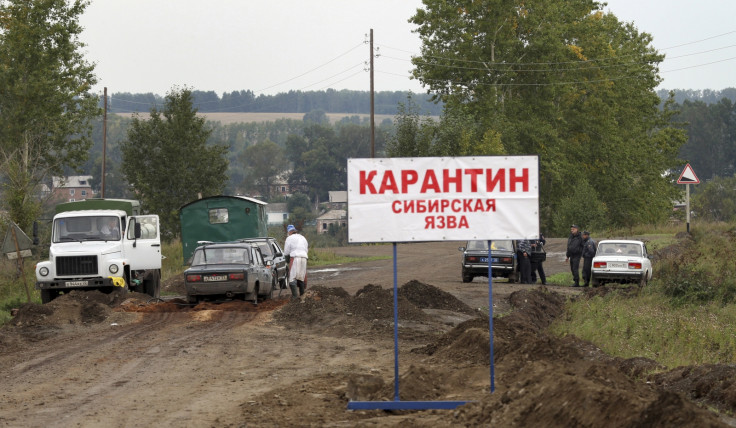The Arctic permafrost is starting to thaw and that is very, very bad news
Max Holmes from the Woods Hole Research Centre explains what thawing permafrost means for the environment and people living in these regions
The Arctic permafrost is starting to thaw, releasing the ground from the frozen state it has been in for thousands of years. At present, permafrost in the Northern Hemisphere covers an area spanning some 20 million square kilometres and is home to tens of millions of people. Regions covered include parts of the US, Canada and Russia.
But what will happen when it defrosts? Max Holmes, the deputy director and senior scientist at the Woods Hole Research Centre, explains:
What is permafrost and why is it thawing?
Permafrost is permanently frozen ground. It is technically defined as ground that has been below zero centigrade for two or more years continuously. In practice, most permafrost has been frozen for thousands and thousands of years.
What is happening now is the Earth is warming and the Arctic is warming even more and as a result the permafrost is starting to thaw.
At what rate is it thawing?

It is a bit difficult to gauge as it can be variable. Permafrost is warming in most of the Arctic – just as most of the Arctic is warming. But sometimes permafrost temperatures might be minus 10C so you can get two to three centigrade warming and it still has not thawed. Whereas in other cases permafrost is warmer and hovering right around that freezing point. That is where you see thawing.
There is also something called an active layer and that is a seasonally thawed layer. In the winter the entire soil column is frozen to the surface, in the summer the surface soil thaws and that seasonally thawed layer is the active layer. So there is also active layer deepening throughout the Arctic.
What has permafrost got to do with methane being released?
One of the main reasons we are interested in permafrost is because it contains vast amounts of ancient carbons. Ancient organic matter. It is essentially the remains of plants and animals that lived thousands and thousands of years ago and because it is frozen, when those plants die, the material does not completely decompose – so carbon builds up over time. When the permafrost thaws, the ancient organic matter starts to decompose.
You can think of it like food in your freezer – it will stay there as long as the freezer remains a freezer. But if it breaks down, it does not take too long for the contents to start rotting. That decaying process produces carbon dioxide and methane. These are carbon-containing molecules and both are greenhouse gasses.
Would the release of CO2 and methane contribute more than current man-made emissions?
That is the concern. That the rates of release of CO2 and methane can become a really significant part of the global carbon budget. A few numbers to put things into perspective – there are about 1,500 billion tonnes of carbon locked up in permafrost. In the atmosphere right now there are about 850 billion tonnes. In all the vegetation on Earth, there are about 500 billion tonnes. So three times more carbon is in permafrost than is in all the forests in Earth and almost twice as much as in the atmosphere.
Permafrost has slowly accumulated carbon. Right now I would say we are roughly in balance, but as the Arctic continues to warm it is tipping towards permafrost being a source of carbon to the atmosphere.
What we are trying to figure out is how much carbon is going to be lost from permafrost over the coming years, decades and centuries. One of the best estimates right now suggests over the rest of the century it could be something like 130-160 billion tonnes of carbon released. To put that number into perspective, that would be an average of about 1.5 billion tonnes of carbon per year. The current total carbon emissions from the US per annum is about 1.4 billion. It is like a whole new US coming online.
Is methane release responsible for the craters that keep appearing in Siberia?
It has been a real mystery. It seems the general consensus that this is to do with warming permafrost and the explosive release of methane. But I cannot speak with any great authority about the underlying factors and to some extent it seems the jury is still out.
What could the thawing potentially mean for the millions of people living in permafrost regions?
In addition to the carbon part of the story, there is also the human infrastructure. Permafrost makes a really good surface to build on – roads, houses etc. as long as it stays frozen, it is a very solid surface. But when it thaws everything gives way. What you see are buildings sinking into the ground, roads that are completely wavy. You see the same thing in natural systems with forests on permafrost – there is a phenomenon called drunken forests where the trees are just tipping over as the permafrost below melts away.

Thawing permafrost has huge implications for human infrastructure. Also the ability of the indigenous people to keep doing what they have been doing for thousands of years, moving across the landscape and relying on the migration patterns of animals and so on. Essentially anywhere you look in the Arctic, things are changing and a lot of that is related to permafrost thawing.
What else could happen when the permafrost thaws?
There is the concern about this becoming what is known as a positive feedback cycle. That is a self-reinforcing cycle with greenhouse gasses released as permafrost thaws, which causes warming. This results in more permafrost thaw and causes more warming and on and on. That is something we worry a lot about. Once this cycle gets going it is hard to stop.
How do we stop it? We control what we can control. Permafrost thaw is driven fundamentally by global warming, which is amplified in the Arctic. How do you control global warming? You control the emissions that are directly under your control – fossil fuel combustion and deforestation. Those things are directly under our control. Permafrost which is this huge potential source of emissions to the atmosphere is not directly under our control.
Is there a concern ancient frozen bacteria is going to emerge from the permafrost?

I am not an expert on this but the short answer is yes. If you had asked me a year ago, it would have seemed conceivable but a little bit far out for me. But now just last summer there were stories about an outbreak of anthrax in Siberia that seemed to be associated with the permafrost thaw and thawing of a reindeer that had died a long time ago with anthrax in its body. So who knows what could be there. The threat is lurking for wildlife and humans I suppose.
Is there anything good that could come from thawing permafrost?
Not much. I suppose some remains might be released so could be studied. On a small scale there could be a local benefit in that some of the methane could be captured and used as an energy source. The bad news is it takes a lot of infrastructure to capture that methane and it is not a solution – you could not capture it all, you will have to put a lid over the entire Arctic. You could maybe heat a house. I do not see many benefits.
What are the big concerns for climate research over the coming years?
It is a weird time to be a climate scientist in the US. It is stunning to me that we are where we are right now. Anything we can do to get [climate change] information out to the public and policymakers that is a good thing. Hopefully the facts will get the attention they deserve.
I am hoping things in the US with respect to climate change and tackling it do not take step backwards over the next few years. Forty percent of our budget is federal-funded and most of it is climate change related, so that is a concern. There is heightened interest and enthusiasm among our supporters and people are recognising we are in the bullseye, and are stepping forward to help.
People are recognising that and our hope is that any loss in federal funding we may suffer will be compensated for. Most funding is from US sources but we would hope that funding from international sources will pick up. There is good reason that it should, with people recognising the US government is stepping back.
Much of the fundamental science underpinning our understanding of global climate change comes from science done in the US and we need to keep that going. Everybody benefits from that.
© Copyright IBTimes 2025. All rights reserved.






















